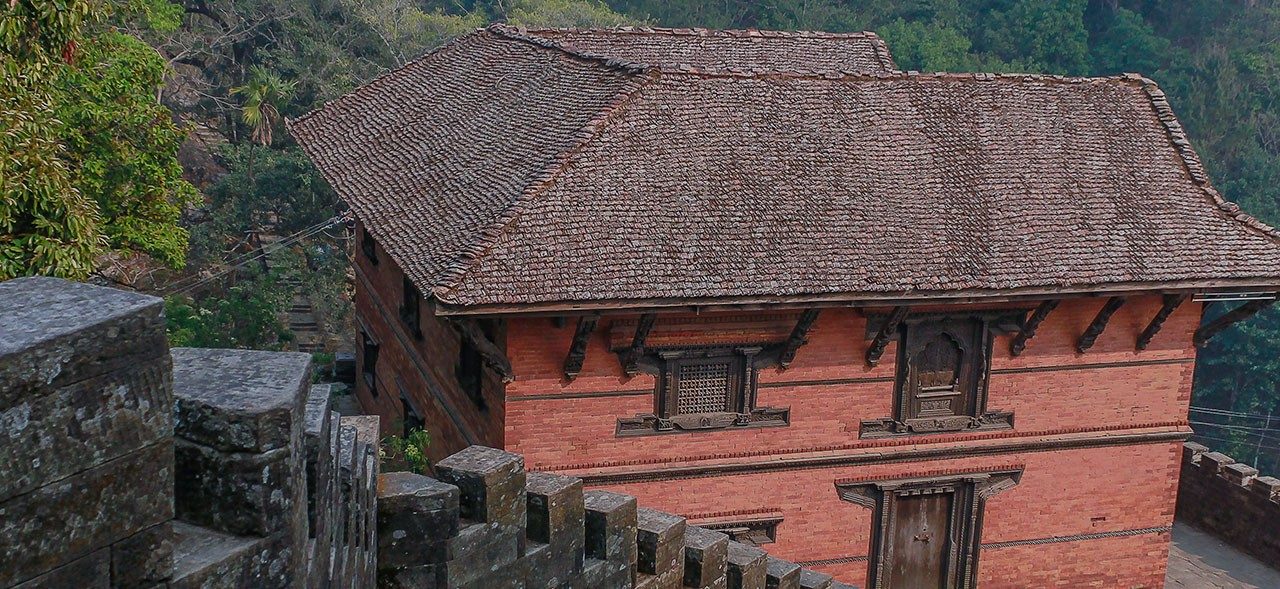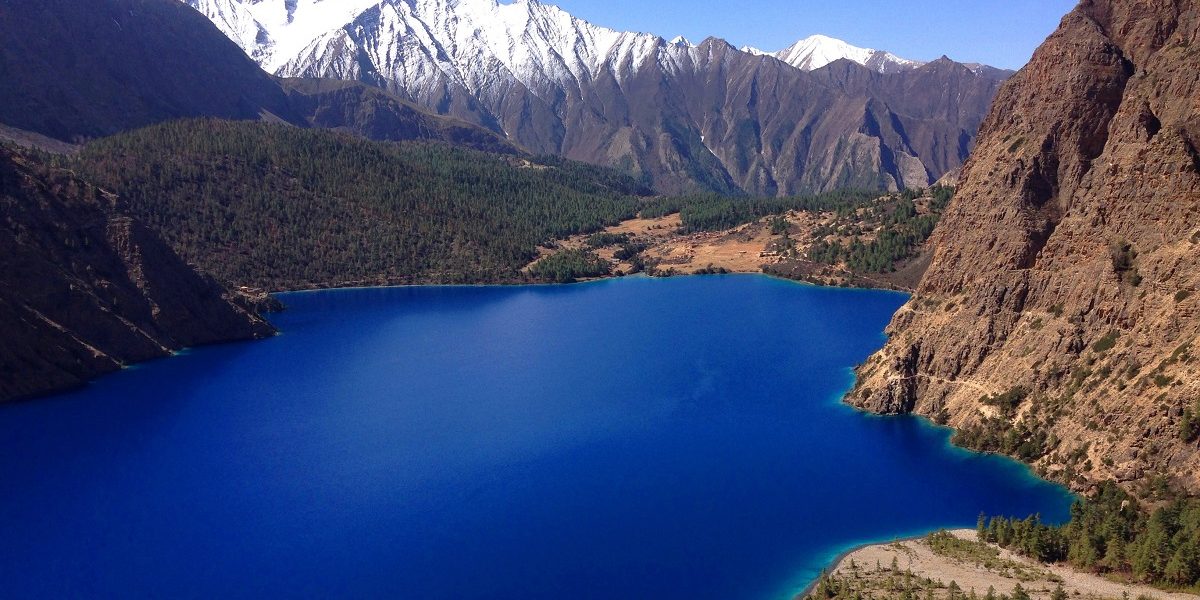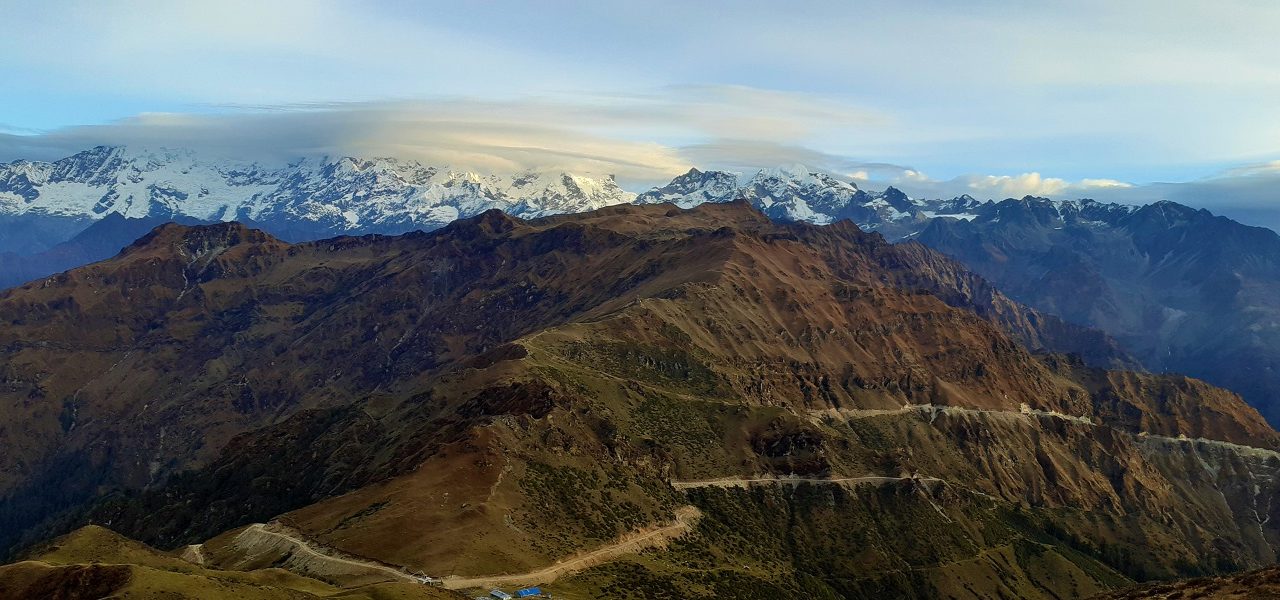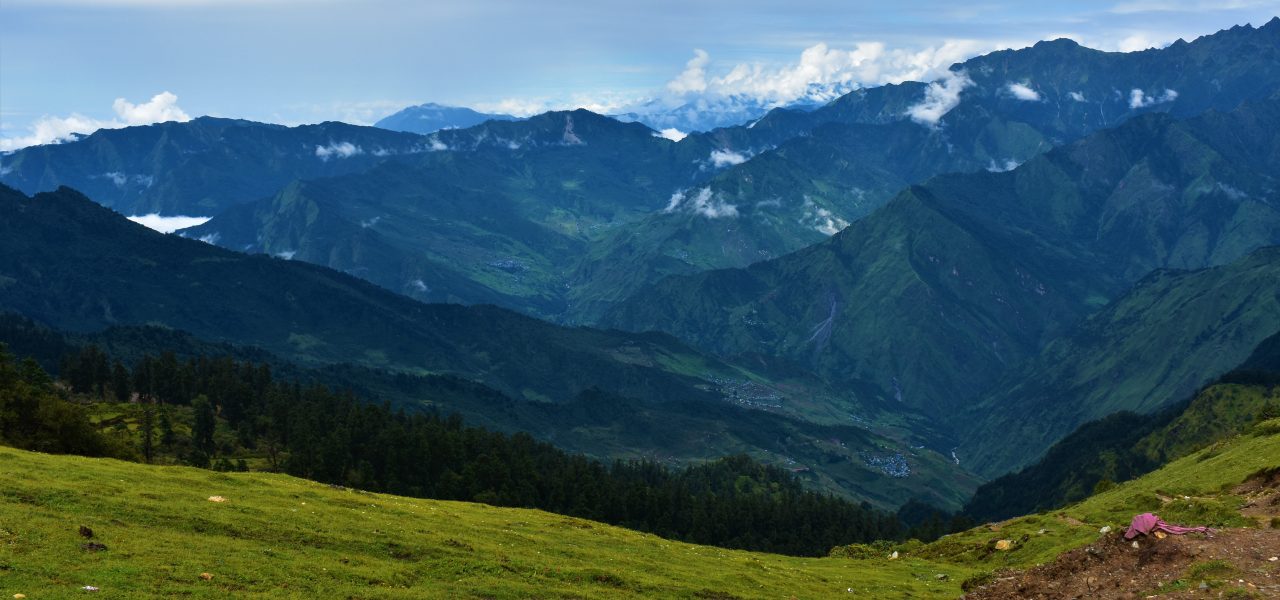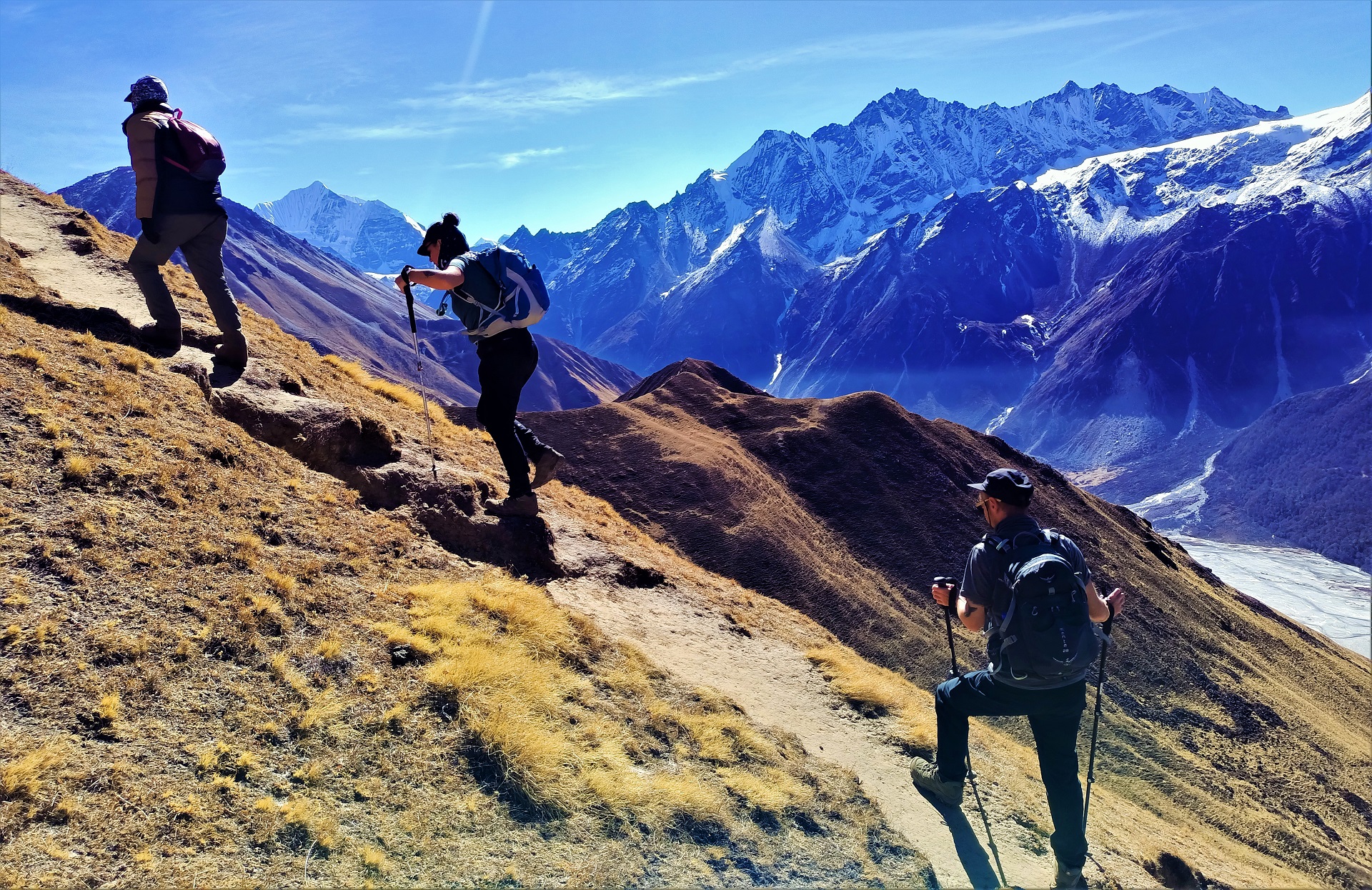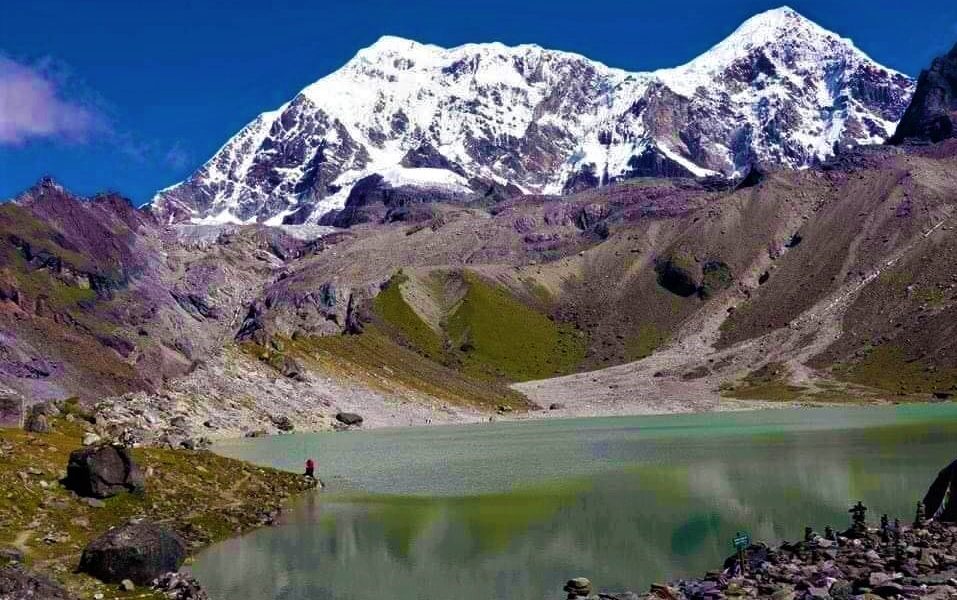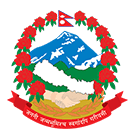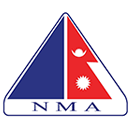This Barabise to Betrawati Trek is beautiful and especially for trekkers who want to experience traditional Nepali culture. This section is the closest to Kathmandu, although being closest to Kathmandu the people of the villages follow their traditional cultures and wear traditional dresses too. The people of these villages offer an interesting mix of Buddhist and Hindu cultures; there are Tamang, Sherpa, Newar and Chettri villages throughout the village. You will be trekking through the countryside and through forests in some parts of the trail. You will be offered amazing views of Langtang range and Dorje Lakpa.
Grade: Moderate
Nepal Homestay Experience
Experience the Nepal Homestay. Witness the wind catch prayer flags amid mountainous backdrops. Hike through beautiful landscapes and explore ancient towns deep in the Kathmandu Valley. Travelers get to experience the affection of being treated as a family member throughout the homestay and immerse themselves in the local culture. Further, get an exciting, adrenaline-pumping rafting adventure in the Bhote Koshi River.
Limi Valley Trek
Limi Valley is in Humla which is one of the most remote districts in Nepal. There are only a few tourists trekking this trail. Humla lies hidden in the far northwest. Limi Valley is located in the north part of the district and was only opened for trekkers in 2002 AD. This trek is one of the most beautiful treks passing through a remote pristine village yet to be discovered.
The major attractions of this Limi Valley trek are the scenery, landscape, and traditional Tibetan cultures that we come across. During this trek, you have the opportunity to encounter the elusive snow leopard, Himalayan blue sheep, jackals, hyenas, and musk deer.
Due to its isolated location, Humla is still “off-the-beaten trek destination”.
Chomolhari Trek
The Chomolhari trek follows the crystal clear trout rich upstream trail of Paro Chu along the verdant rhododendron canopied forests and salubrious green alpine meadows. Mt. Chomolhari, having one of the most beautiful peaks in the Eastern Himalaya, stands at a magnificent 7314 mts with age old frontier forts and sprawling yak pastures in its foreground; a truly rewarding sight for the determined trekker. In the course of the trek, one will have sojourned through several places rich in history at Paro, Thimpu and Punakha Valleys.
Trip Code NSTR252
Mt.Kailash & Mansarobar 15 – Day Ex-Kathmandu
Mt. Kailash (6714 m) – also known as Tise, Kailasa, or Kang Rinpoche (Jewel of the Snows). Since time immemorial it has been celebrated in many Eastern cosmologies as Mt. Meru, the Axis Mundi. And as the center of the physical & metaphysical universe, Mt. Meru is sacred to the Jains, the Hindus, the Buddhists, and the Bonpos. For the Hindus, the mountain represents the seat of Shiva. And for the Buddhists, it represents as a terrestrial projection of the cosmic Mandala of Dyani Buddhas & Bodhisattvas (The Wheel of Life).
A visit to Mt. Kailash and Lake Mansarovar forms the ultimate realization of their spiritual pursuit in life. And for adventure lovers, it offers ruggedness, excitement, solitude, and bliss. All trips are planned to give a wholesome experience of a trip which may be rightly termed a ‘Once-in-a-lifetime’.
Trip Code NSTR262
Lhasa – Mount Kailash – 19 Day Ex-Kathmandu Tour
Lhasa – Mount Kailash – Kathmandu is an adventure trip for travelers commencing with the breathtaking trans-Himalayan flight from Kathmandu to Lhasa – a historical Buddhist city with a unique culture and architecture and an overland route from Lhasa to Mt. Kailash and finally to the Nepal border. This trip offers truly spectacular views of the Himalayas, high mountain passes, ancient monasteries, fortresses, and a people and culture from a bygone era.
Trip Code NSTR261
Shey Phoksundo Lake Trek (GHT)
Discover the Breathtaking Shey Phoksundo Lake Trek
The Shey Phoksundo Lake Trek is a journey through Shey Phoksundo National Park, Nepal’s largest and only trans-Himalayan national park. The park features stunning landscapes, diverse wildlife, and breathtaking mountain views, making it one of the most scenic destinations in the world.
This trek takes you to the pristine Shey Phoksundo Lake, an alpine freshwater lake at 3,611.5 m / 11,849 ft in the Dolpa District. Along the way, you will pass through Ringmo Village, a traditional Dolpo settlement on a 30,000–40,000-year-old landslide dam that formed the lake. From here, you can admire the 167 m / 548 ft Jharana Waterfall, a highlight for every visitor. Each year, hundreds of pilgrims visit this sacred lake to experience its holy waters.
The trek offers diverse landscapes, including alpine forests, green meadows, cascading waterfalls, and serene riversides. You will also enjoy cultural experiences in Ringmo Village, interacting with locals and learning about the unique Tibetan-influenced culture. Shey Phoksundo is also an important center for the Bon tradition, one of the world’s oldest spiritual practices, predating Tibetan Buddhism. Pilgrims and trekkers can explore Tshowa Gompa, a revered Bon monastery, and observe the rituals, prayer flags, and spiritual practices that reflect the rich Bon heritage of the Dolpo region.
The region is also rich in ancient monasteries, such as Shey Gompa and Thashung Gompa, offering centuries-old spiritual insight. Wildlife enthusiasts may spot rare animals, including snow leopards, blue sheep, and Himalayan wolves. For those seeking adventure and solitude, the trek provides an off-the-beaten-path experience through pristine trails.
The cultural diversity of Dolpa is fascinating. In Upper Dolpa, you will witness traditional Tibetan and Bon culture, while in Lower Dolpa, the area blends Buddhism and Bon traditions, highlighted by Ringmo Village. The park also features multiple historic gompas and sacred landmarks, making it a rich cultural and spiritual destination.
Why Choose Nepal Sanctuary Treks for the Shey Phoksundo Lake Trek?
With over 26 years of experience, Nepal Sanctuary Treks expertly curates unforgettable trekking adventures across Nepal’s most iconic regions, including the world-famous Great Himalayan Trail. We specialize in organizing both Great Himalayan Trail treks and diverse trekking styles, including camping treks and teahouse lodge treks, tailored to your preferences and fitness level.
As a Travelife Certified company, we are committed to sustainable tourism and responsible travel. practices that protect the environment and uplift local communities. Our expert team of professional guides prioritizes your safety and comfort throughout the Shey Phoksundo Lake Trek in Nepal, ensuring a seamless and memorable experience.
We proudly support gender equality by empowering women-led businesses, promoting girls’ education, and hiring female guides, contributing to socially responsible tourism in Nepal.
Backed by extensive local knowledge and years of expertise, our team will support you every step of the way on your Shey Phoksundo Lake Trek, helping you reach breathtaking Himalayan viewpoints while supporting eco-friendly trekking and community-based tourism initiatives.
This customizable sample itinerary can be tailored to suit your travel style and schedule. Get in touch with our travel experts today at info@nepalsanctuarytreks.com or sanctuarytreks@gmail.com to start planning your unforgettable Shey Phoksundo Lake Trek in Nepal — an epic adventure blending breathtaking mountain views, rich culture, and sustainable travel.
Note: below trekking hours, altitudes and distances are approximate, and absolutely for general ideas only.
Rara Lake Trek (GHT)
Rara Lake Trek – Nepal’s Majestic “Queen of Lakes”
The Rara Lake Trek is an extraordinary journey to Nepal’s largest freshwater lake, nestled in the Mugu District of the Karnali region. Often called the “Queen of Lakes”, Rara Lake draws trekkers and nature lovers looking for untouched landscapes, tranquil waters, and stunning Himalayan vistas. This trek offers an unforgettable adventure, combining high-altitude trekking, serene lakeside exploration, and immersive cultural experiences.
The Rara Lake Trek offers trekkers a journey through some of Nepal’s most stunning and remote landscapes, including lush forests, alpine meadows, and open barren terrains. Along the way, you will encounter ethnic mountain villages, where you can observe traditional lifestyles and local customs, and cross a few high mountain passes that provide panoramic views of snow-capped peaks and surrounding valleys. Because the western region sees fewer visitors, the trek offers a peaceful and authentic experience, culminating at Rara Lake, where the crystal-clear waters reflect the towering Himalayan mountains, creating a perfect setting for photography and serene contemplation.
This is one of the best treks and a very interesting section of the Great Himalayan Trek. In this section, you will trek through barren landscapes with beautiful forests. Starting the trek from Juphal, you will end it in Rara Lake. The forests and mountains surround the crystal-clear lake. On a clear day, the mountain reflects in the clear lake water. Only a few trekkers choose to trek in the western region, so along the trail, you will only come across a few other trekkers.
Why Choose Nepal Sanctuary Treks for the Rara Lake Trek?
With over 26 years of experience, Nepal Sanctuary Treks expertly curates unforgettable trekking adventures across Nepal’s most iconic regions, including the world-famous Great Himalayan Trail. We specialize in organizing both Great Himalayan Trail treks and diverse trekking styles, including camping treks and teahouse lodge treks, tailored to your preferences and fitness level.
As a Travelife Certified company, we are committed to sustainable tourism and responsible travel. practices that protect the environment and uplift local communities. Our expert team of professional guides prioritizes your safety and comfort throughout the Upper Dolpo Trek in Nepal, ensuring a seamless and memorable experience.
We proudly support gender equality by empowering women-led businesses, promoting girls’ education, and hiring female guides, contributing to socially responsible tourism in Nepal.
Backed by extensive local knowledge and years of expertise, our team will support you every step of the way on your Rara Lake Trek, helping you reach breathtaking Himalayan viewpoints while supporting eco-friendly trekking and community-based tourism initiatives.
This is a sample itinerary of Rara Lake Trek. It can be customized to suit your preferences. For more information or to plan your journey, contact us at info@nepalsanctuarytreks.com
Are you ready to embark on the Rara Lake Trek? Contact Us today
Note: below trekking hours, altitudes, and distances are approximate, and absolutely for general ideas only.
Ruby Valley Trek
As you hike through this off-the-beaten-path trail, you’ll explore traditional mountain villages, stay in cozy homestays, and savor organic, locally prepared meals. The journey provides a genuine glimpse into rural Nepali life, far from commercial trekking crowds.
The Ruby Valley Trek also showcases Nepal’s ecological diversity. Trekkers walk through forests filled with wildflowers, medicinal herbs, and may even spot rare wildlife like red pandas and Himalayan tahrs. The region is famous for its natural deposits of rubies and crystals, adding a unique twist to the trek.
The trail winds past cascading waterfalls, terraced hillsides, vibrant rhododendron forests, and scenic pastures. Along the way, you’ll enjoy panoramic views of snow-capped Himalayan giants, including Ganesh Himal (Yangra Peak), Manaslu, Langtang, Paldor, and Lapsang Karbo.
One of the highlights of the Ruby Valley Trek is the ascent to Pangsang La Pass (3,842 m) — the highest point of the route. From the summit, you’re rewarded with sweeping views of the Ganesh Himal range and beyond — a moment of pure mountain magic.
When to trek Ruby Valley?
The Ruby Valley Trek is one of the few treks in Nepal accessible throughout the year, offering a truly off-the-beaten-path adventure. While it’s possible to trek this route year-round, the optimal season is from March- May, and mid-October to May, when weather conditions are most favorable, and the mountain views are at their clearest.
During the winter months, especially in January and February, heavy snowfall can occasionally close high mountain passes for extended periods. However, the lower sections of the Ruby Valley Trek typically remain open, making it a great option for those seeking winter trekking in Nepal without the crowds.
Ruby Valley Trek Difficulty Level and Fitness Requirements
The Ruby Valley Trek is rated as a moderate trek, making it suitable for those with a reasonable level of physical fitness and some prior trekking experience. It’s perfect for adventurers who seek a bit of a challenge while enjoying stunning Himalayan scenery and authentic cultural encounters.
This 7 to 9-day trek covers varied terrain, including dense forests, terraced farmlands, and rugged mountain ridges. Certain sections feature steep and uneven trails, which may be tough for first-time trekkers. You should be prepared to hike 5 to 7 hours daily at high elevations.
With proper training and preparation, even beginners can complete the Ruby Valley Trek. Activities such as hiking, swimming, cycling, or jogging several weeks before your trek can help improve your stamina and endurance for this incredible journey.
Why Choose Ruby Valley Trek with Nepal Sanctuary Treks?
At Nepal Sanctuary Treks, we provide a personalized Ruby Valley Trek experience. With over 26 years of expertise in the field, we craft custom Ruby Valley Trek itineraries to suit your pace and preferences. Our experienced guides bring invaluable knowledge, offering insights into the rich local culture while ensuring your safety throughout the journey. They have trekked the Ruby Valley Trek many times and knows the region inside out.
We focus on small group sizes and rigorous safety protocols, providing you with personalized attention and safety. Our long-standing partnerships with trusted suppliers ensure you have carefully selected accommodations and reliable transportation during your Ruby Valley Trek.
As a Travelife Certified company, we are dedicated to promoting sustainable and eco-friendly travel. When you choose Ruby Valley Trek you support local communities and help minimize environmental impacts, making responsible tourism a key part of your adventure. Your safety, comfort, and unforgettable experience are our top priorities.
Contact us today to plan your tailored Ruby Valley Trek.
This is a sample itinerary of the Ruby Valley Trek . We shall customize the program as per your needs and preferences.
Note: below trekking hours, altitudes and distances are approximate, and absolutely for the general idea only.
Kathmandu Valley RIM Biking: A cleaner escape from bustling city
Mountain biking around Kathmandu valley, RIM biking is the shortest and exceptionally enjoyable tranquil trip which takes you along the typical picturesque rural villages of Nepal, the splendid pristine forest of rhododendron and pine forest, terraced farmlands, legendary temples, monasteries majestic Annapurna, Ganesh Himal, Langtang, Manasulu and many other mountain ranges. The RIM biking trip of Kathmandu valley offers a splendid vista of the sunrise and sunset with the majestic Himalayan backdrop as well as a bird’s eye view of the valley. You will explore Kakani, Mulkharka, Chisapani, Nagarkot, Namobuddha, Dhulikhel, Balthali and Lakuri Bhanjyang.
Throughout the trip, you will be able to experience a serene atmosphere and natural scenic setting that make your trip truly amazing and blissful.
Tamang Heritage Trek
The Tamang Heritage Trek is a culturally immersive and scenic adventure located just west of the iconic Langtang National Park, near the Tibetan border. This lesser-known trekking route is ideal for travelers seeking a blend of natural beauty and cultural depth in the Himalayas.
Inhabited predominantly by the Tamang ethnic community, the region reflects a strong Tibetan influence. The Tamang people, once ancient horse traders between Nepal and Tibet, offer trekkers a rare glimpse into their rich traditions, customs, and spiritual life. As you journey along the trail, you’ll visit centuries-old Buddhist monasteries, experience warm Tamang hospitality, and gain insight into their daily lives.
The Tamang Heritage Trek passes through picturesque villages such as Syabrubesi, Gatlang, Tatopani, Nagthali, Thuman, Timure, and Briddhim before circling back to Syabrubesi. These charming settlements are nestled among terraced fields, verdant forests, flowing rivers, and sweeping Himalayan views.
Along the way, trekkers are rewarded with breathtaking vistas of Langtang Lirung, Ganesh Himal, Paldor Peak, Sringi Himal, Dorje Lakpa, and the Jugal Himal range. Wildlife enthusiasts will also appreciate the region’s diverse flora and fauna.
Accommodation options include local tea house lodges and homestays, offering fresh, organic meals and a deeper connection with the local culture. By choosing the Tamang Heritage Trek, you’re not only embarking on a memorable Himalayan journey but also contributing to sustainable tourism and helping uplift the Tamang community through responsible travel.
Best season for the Tamang Heritage Trek
The Tamang Heritage Trek is best experienced during spring (March to May) and autumn (September to November), the two most favorable trekking seasons in Nepal.
In spring, the Tamang region comes to life with lush greenery and vibrant rhododendron blooms. The weather is mild and comfortable, making it perfect for trekking through scenic landscapes and immersing yourself in the local culture. This season also offers excellent visibility of snow-capped Himalayan peaks, which is ideal for photography and nature enthusiasts.
Autumn is another peak season for the Tamang Heritage Trek. With clear blue skies, dry weather, and moderate temperatures, it’s one of the most popular times for hiking in the Himalayas. Trekkers are rewarded with stunning views of the Langtang and Ganesh Himal ranges under crystal-clear conditions.
While both seasons provide optimal trekking conditions, it’s always a good idea to check updated weather forecasts before your journey, as weather patterns can vary slightly each year.
Tamang Heritage Trek Difficulty
The Tamang Heritage Trek is considered a moderate-level trek, ideal for trekkers with a decent level of physical fitness. While the route includes daily hikes of 5–7 hours over uneven and occasionally steep terrain, it remains manageable for those with some prior trekking or hiking experience. The trail is well-marked and does not involve any technical climbing, making it a great choice for adventurous travelers in good health who are eager to explore both natural beauty and local culture in the Himalayas.
Why Choose Tamang Heritage Trek with Nepal Sanctuary Treks?
At Nepal Sanctuary Treks, we offer a tailored Tamang Heritage Trek experience that combines adventure, culture, and sustainability. With over 26 years of expertise in organizing Himalayan treks, we design customized Tamang Heritage Trek itineraries to match your pace, interests, and fitness level.
Our trekking guides have extensive experience on the Tamang Heritage Trek and provide in-depth knowledge of the local Tamang culture, history, and traditions—ensuring your safety while enriching your journey.
We prioritize small group sizes and follow strict safety protocols, giving you personalized attention every step of the way. Thanks to our long-standing relationships with trusted local partners, you’ll enjoy well-chosen accommodations, delicious local cuisine, and reliable logistics throughout your trek.
As a Travelife Certified company, we are committed to sustainable and responsible tourism. When you book the Tamang Heritage Trek with us, you contribute directly to local economies and help protect the cultural and natural heritage of this beautiful region.
Contact us today to plan your tailored Tamang Heritage Trek.
This is a sample itinerary of the Tamang Heritage Trek . We shall customize the program as per your needs and preferences.
Note: below trekking hours, altitudes and distances are approximate, and absolutely for the general idea only.
Ganesh Himal Trek
Experience the Spectacular Ganesh Himal Trek: A Hidden Gem in Ruby Valley
The Ganesh Himal Trek, also known as the Ruby Valley Trek, is one of Nepal’s most stunning and least explored trekking adventures. Located between the world-famous Manaslu National Park and Langtang National Park, the Ganesh Himal Trek offers breathtaking panoramic views of the Himalayas and an authentic cultural experience far from crowded trails.
Why Choose the Ganesh Himal Trek?
The Ganesh Himal Trek is named after the Hindu deity “Ganesh,” whose image is reflected in the shape of Ganesh IV peak. Mt. Ganesh I, towering at 7,118 meters (23,349 feet), was first conquered by Swiss and French climbers in 1955. This trek reveals pristine landscapes filled with diverse flora and fauna, alongside the rich cultural tapestry of ethnic groups such as Gurung, Tamang, Dalit, and Magar that you will encounter on the Ganesh Himal Trek.
Must-See Highlights on the Ganesh Himal Trek
As you traverse the Ganesh Himal Trek, you will witness breathtaking mountain vistas including Dorje Lakpa, Boudha Himal, Langtang Lirung, Hiunchuli, and the iconic Ganesh Himal peaks (I-IV). The highest point of the Ganesh Himal Trek is Pangsang La Pass at 3,842 meters / 12,605 feet, offering unmatched scenic beauty and an unforgettable camping experience in the wilderness.
Explore Nature and Culture on the Ganesh Himal Trek
The Ruby Valley, covered on the Ganesh Himal Trek, is home to rare endangered species, medicinal herbs, and precious minerals like rubies and crystals. You will wander through enchanting rhododendron and juniper forests, crystal-clear waterfalls, terraced hills, and lush meadows while experiencing authentic Himalayan village life unique to the Ganesh Himal Trek route.
Best Time to Experience the Ganesh Himal Trek?
The optimal trekking seasons for the Ganesh Himal Trek are spring (March to May) and autumn (late September to November). During these periods, you’ll enjoy stable weather, clear mountain views, and comfortable temperatures. Springtime offers vibrant rhododendron blooms, while autumn features crisp air and golden landscapes — perfect for photography and trekking the Ganesh Himal Trek.
Ganesh Himal Trek Difficulty: What to Expect
The Ganesh Himal Trek is moderate and suitable for beginners with basic fitness, as well as seasoned trekkers looking for tranquility away from popular routes. The daily hikes pass through alpine meadows, dense forests, and traditional villages. Prepare with cardio exercises and hiking practice for two months before your Ganesh Himal Trek adventure. Mental strength — patience and positivity — is key to fully embracing the Ganesh Himal Trek experience.
Why Book Your Ganesh Himal Trek with Nepal Sanctuary Treks?
With Nepal Sanctuary Treks, your Ganesh Himal Trek is fully customized. As a Travelife Certified company, we focus on sustainable tourism and support local communities through eco-friendly practices and partnerships. We keep group sizes small to provide personalized service for your Ganesh Himal Trek.
Unlike typical teahouse treks, the Ganesh Himal Trek is entirely camping-based. You’ll spend your nights in premium tented campsites that provide privacy, comfort, and stunning panoramic views of the Himalayas along the Ganesh Himal Trek route.
Every day, our expert expedition cooks craft fresh, organic meals using locally sourced ingredients. These delicious meals are served warm in a cozy dining tent, adding a welcoming touch of comfort to your remote Ganesh Himal Trek wilderness adventure.
This is a sample itinerary, and we shall customize the program as per your needs and preferences. Get in touch with our travel expert or email us at info@nepalsanctuarytreks.com.
Note: Below trekking hours, altitudes and distances are approximate, and absolutely for general ideas only.
Langtang Gosainkunda Trek
Langtang Gosainkunda Trek: Trekking Nepal’s Pristine National Park
Langtang Gosainkunda Trek is one of Nepal’s most breathtaking Himalayan adventures. Located just north of Kathmandu near the Tibetan border, this journey leads deep into Langtang National Park—a protected sanctuary famed for its rich biodiversity and cultural heritage.
Spanning over 1,700 square kilometers, Langtang National Park shelters rare wildlife such as the elusive Red Panda, Snow Leopard, Musk Deer, and Himalayan Tahr. Trekkers will also encounter more than 345 bird species and numerous butterflies fluttering through lush forests.
This Langtang Gosainkunda Trekking route takes you through diverse ecological zones from subtropical bamboo groves and vibrant rhododendron forests to subalpine woodlands filled with silver fir, oak, and hemlock. Such rich flora and fauna make this trek a paradise for wildlife enthusiasts and nature photographers seeking peaceful, off-the-beaten-path trails.
Beyond its natural wonders, Langtang holds a deep cultural significance. The renowned British explorer Bill Tilman famously described it as “one of the world’s most beautiful valleys,” a reputation it continues to uphold. Throughout the trek, majestic peaks such as Langtang Lirung, Dorje Lakpa, and Langtang Ri rise dramatically, providing awe-inspiring panoramic views at every turn. These Himalayan giants frame your journey as you make your way toward the sacred Gosainkunda Lake, a shimmering alpine reservoir revered by both Hindus and Buddhists alike.
Along the way, trekkers can explore sacred Buddhist sites such as Kyanjin Gompa and Sing Gompa monasteries, offering opportunities to connect with local Tamang and Tibetan Buddhist communities. Colorful prayer flags, ancient Mani walls inscribed with mantras, and cliffside shrines enrich the spiritual atmosphere of this high-altitude pilgrimage.
Best Time to Trek Langtang Gosainkunda
The best time to embark on the Langtang Gosainkunda Trek is during autumn, from September to November. This season offers clear skies, stable weather, and comfortable daytime temperatures averaging around 20°C, dropping to 6°C at night. The visibility is excellent; perfect for photography and capturing breathtaking Himalayan vistas.
Spring, from March to May, is another ideal season for trekking. The trails come alive with blooming rhododendron forests, adding vibrant color to your journey. During this time, temperatures range between 18°C and 30°C, making it a pleasant and scenic experience.
Early June is still suitable for trekking, as the weather generally remains dry before the onset of the monsoon. However, from late June through August, the monsoon season brings heavy rains, making trails muddy and slippery. Views may be limited due to cloud cover, and leeches are more common in lower, humid areas.
Winter, from December to February, offers a peaceful and crisp trekking atmosphere. However, higher sections such as Gosainkunda Lake and Laurebina Pass can be covered in snow, and the lake may freeze. Despite the cold, early December can still be a viable time for well-prepared trekkers.
Langtang Gosainkunda Trek Difficulty and Physical Fitness
The Langtang Gosainkunda Trek is rated as a moderate, requiring multiple days of trekking through steep terrain and gaining significant elevation. The route features 5-7 walking hours, ascents and descents, and exposure to high altitudes. Good physical fitness, stamina, and acclimatization are essential for a successful trek.
Why Choose Langtang Gosainkunda Trek with Nepal Sanctuary Treks?
At Nepal Sanctuary Treks, we provide a personalized Langtang Gosainkunda Trek experience. With over 27 years of expertise in the field, we craft custom Langtang Gosainkunda Trek itineraries to suit your pace and preferences. Our experienced guides bring invaluable knowledge, offering insights into the rich local culture while ensuring your safety throughout the journey. They have trekked the Langtang Gosainkunda Trek many times and knows the region inside out.
We focus on small group sizes and rigorous safety protocols, providing you with personalized attention and safety. Our long-standing partnerships with trusted suppliers ensure you have carefully selected accommodations and reliable transportation during your Langtang Gosainkunda Trek.
As a Travelife Certified company, we are dedicated to promoting sustainable and eco-friendly travel. When you choose our Langtang Gosainkunda Trek, you support local communities and help minimize environmental impacts, making responsible tourism a key part of your adventure. Your safety, comfort, and unforgettable experience are our top priorities.
Contact us today to plan your tailored Langtang Gosainkunda Trek.
This is a sample itinerary of the Langtang Gosainkunda Trek. We shall customize the program as per your needs and preferences.
Note: below trekking hours, altitudes and distances are approximate, and absolutely for the general idea only.
Dudh Kunda Lake Trek
Dudh Kunda Lake Trek: Off-the-Beaten-Path Adventure
The 18-day Dudh Kunda Lake Trek is a serene, less-crowded alternative to popular routes like the Everest Base Camp trek or the Gokyo Lakes trek. This Nepal trekking adventure offers breathtaking views of Mount Everest, Mt. Numbur, and Mt. Karyolung, lush rhododendron forests, terraced fields, and picturesque Himalayan landscapes. The Dudh Kunda Lake Trek in Nepal is ideal for travelers seeking an off-the-beaten-path Himalayan trekking experience.
A highlight of the Dudh Kunda Lake Trek is visiting the sacred Dudh Kunda Lake, or “Milky Lake,” revered by both Buddhists and Hindus. Taking a bath during the full moon (August–September) is believed to wash away sins and bring fortune.
Another unforgettable experience on the Dudh Kunda Lake Trek is the sunrise hike up Pikey Peak (4,065 m), offering panoramic views of the highest Himalayan peaks. Trekking to the sacred lake, camping overnight, and immersing yourself in authentic Sherpa culture makes the Dudh Kunda Lake Trek with camping an extraordinary adventure and a photographer’s dream.
Physical Fitness for the Dudh Kunda Lake Trek
The Dudh Kunda Lake Trek is rated moderate and suitable for most people in good physical condition. To fully enjoy this Nepal trekking adventure, regular physical activity such as walking, hiking, or cardio exercises is recommended. Proper preparation will help you build stamina for the Dudh Kunda Lake Trek and make the most of the scenic landscapes, cultural experiences, and Himalayan adventures along the route.
Lamjung Himal Trek
Lamjung Himal Trek: A Hidden Gem in the Annapurna Region
The Lamjung Himal Trek is a rarely explored trail in Nepal that delivers a raw and authentic Himalayan experience. This 9-day camping adventure takes you through pristine alpine landscapes, centuries-old Gurung villages, and some of the most breathtaking viewpoints in the Annapurna region.
What makes this trek truly unique is its remote route and fully camping-based setup. Unlike commercial trekking paths lined with teahouses, the Lamjung Himal trail remains free from crowds and infrastructure. You will enjoy complete immersion in nature, solitude, and a deep connection with the stunning Himalayan landscape. It is a one-of-a-kind journey for travelers who want to escape tourist routes and experience Nepal’s untouched wilderness.
Starting in Besisahar, the traditional gateway to the Annapurna Circuit, the trek moves west into quieter terrain. You will hike through lush rhododendron forests, cross high ridgelines called dandas, and sleep at serene kharkas, or seasonal pastures, with panoramic views of surrounding peaks.
A major highlight is the ascent from Valley Camp at 3,717 meters to Rambrong West Summit at 4,500 meters. From this vantage point, you will be rewarded with sweeping views of Lamjung Himal at 6,983 meters, the iconic Machapuchare (Fishtail), Manaslu, and the entire Annapurna range stretching across the horizon.
The Lamjung Himal Trek offers more than a hike. It is an intimate exploration of Nepal’s wild beauty, ideal for travelers seeking adventure far from the beaten path.
Best Time to Experience the Lamjung Himal Trek
The ideal seasons for the Lamjung Himal Trek are spring (March to May) and autumn (September to November). In spring, rhododendrons bloom along the trails and temperatures remain moderate, creating perfect trekking conditions.
Autumn provides clear skies, crisp air, and spectacular mountain visibility, making it an excellent time for photography and enjoying the serene, uncrowded landscapes.
Lamjung Himal Trek Difficulty Level: What to Expect
The Lamjung Himal Trek offers a moderate challenge, making it perfect for fit beginners and experienced trekkers. If you want a quieter alternative to the busy Annapurna trails, the Lamjung Himal Trek delivers stunning scenery every day.
You will hike through lush forests, alpine meadows, and scenic ridgelines, experiencing Nepal’s untouched landscapes up close. This trek requires good physical fitness and a strong mindset for a safe and enjoyable journey.
Prepare for the Lamjung Himal Trek with basic training such as hiking, walking, or cardio workouts for two months before your adventure.
Mental readiness is equally crucial. Maintaining a positive attitude, patience, and flexibility will help you overcome challenges and fully enjoy every moment of the Lamjung Himal Trek.
Why Choose Nepal Sanctuary Treks for Your Lamjung Himal Trek?
With Nepal Sanctuary Treks, you can fully customize your Lamjung Himal Trek. As a Travelife Certified company, we prioritize sustainable tourism and actively support local communities through eco-friendly practices and partnerships. We keep group sizes small to deliver personalized attention and service.
Unlike typical teahouse routes, the Lamjung Himal Trek follows a fully camping-based itinerary. You will stay at high-quality tented camps, locally called kharkas, nestled in remote alpine settings. These camps provide privacy, comfort, and breathtaking views of the Himalayas.
Every day, our skilled expedition cooks prepare fresh organic meals using locally sourced ingredients. Meals are served warm in a cozy dining tent, adding comfort to your wilderness adventure.
Discover why Nepal Sanctuary Treks is the ideal choice for your Lamjung Himal Trek and experience the Himalayas like never before.
Customizable Lamjung Himal Trek Itinerary
Discover the stunning Lamjung Himal Trek in Nepal’s Annapurna region. Contact our experts to create a fully customized Lamjung Himal Trek itinerary.
This is a sample itinerary for the Lamjung Himal Trek and can be tailored to your preferences, fitness level, and travel style. We design each trek to ensure an unforgettable Himalayan adventure.
Note: Below Lamjung Himal Trek’s hours, altitudes and distances are approximate, and absolutely for the general idea only.


